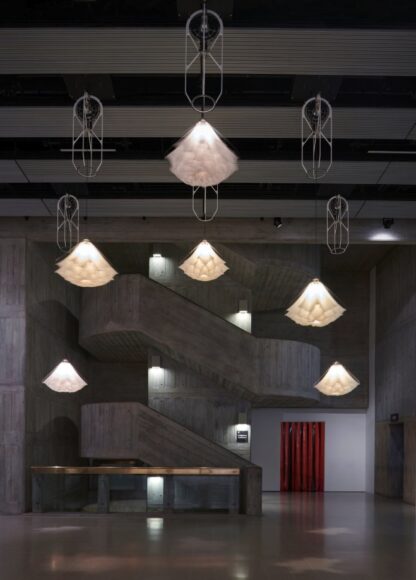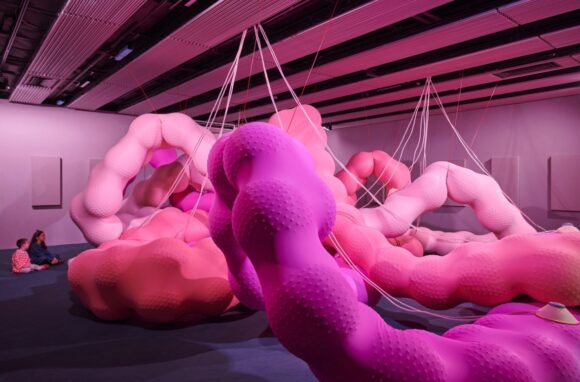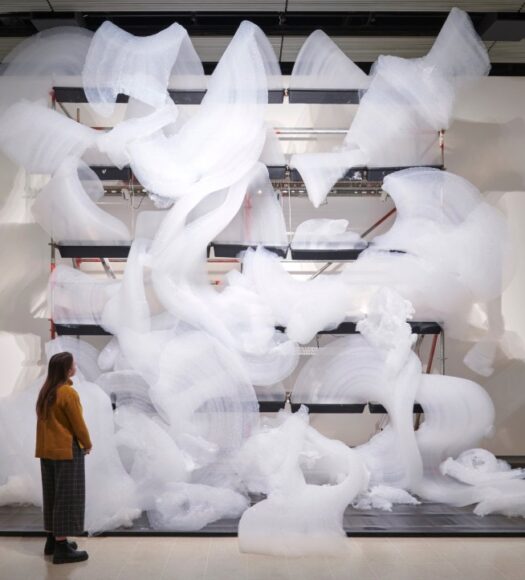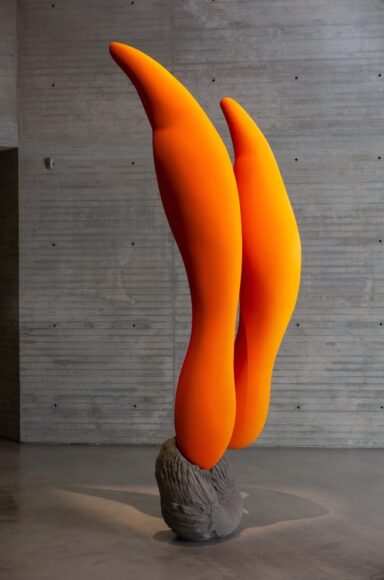
As I made my way round the outrageously blobby and constantly surprising new show at the Hayward Gallery, I found myself thinking about the big public spaces in London that present contemporary art, and – naughty me! – ranking them from five to one. Because that’s the kind of man I am!
Number five has to be the Whitechapel Art Gallery, which has gone into ursine hibernation since former director, Iwona Blaswick, did a Ronaldo and headed to Saudi Arabia to run a big slab of the new Saudi arts budget. Who knew contemporary art in Saudi was such a magnet?
Another disappointment, at number four, is the Tate, in both its franchises, Tate Modern and Tate Britain. The obsession with identity politics that has made both of them dreary and preachy has also diverted them from the real stuff of art.
Number three is the Serpentine Gallery which used to play a critical role in the progress of British art but which spends most of its energy these days repeating things we saw six months ago at this or that international biennale. Visit more UK studios and collect fewer airmiles would be my advice to the Serpentine!
Second is the Camden Arts Centre which, frankly, performs miracles on the tiny budget it is forced to work with. Always stimulating, always fresh, CAC is proof of how far a true love of art can take you with limited resources.
Top, though, for invention, initiative, energy and surprises has to be the Hayward Gallery, where you genuinely never know what’s coming next. Witness the multi-blobbed event that triggered these thoughts: When Forms Come Alive: Sixty Years of Restless Sculpture.
Sculpture is the most open-ended of all art’s methods. Its range is gigantic. Different aspects of the visible world — the human figure, the built environment, the beauty of machines — have at different times exerted a hold on it. This show looks at one of the most consistent of these motivating forces: nature.

We start with an invasion of billowing shapes that float down towards us from the roof like a species of jellyfish that has learnt to live out of water. Created by a Dutch collective called Drift, the electronic jellyfish trigger that warm and fuzzy confusion you always feel when cute robots make you want to take them home and keep them as pets.
Next door, however, where Eva Fàbregas from Barcelona has her moment, a second techno-natural invasion feels less welcoming. This time we wander into a pink room full of intertwined intestinal shapes that snake around a space filled with throbbing electro music and push us against the wall as they expand. Imagine if black puddings were pink, as fat as cows and could not stop growing longer. Give me the cute jellyfish any day.

The Hayward has collected 21 sculptors infected by this love of blobs and outpourings, blossomings and webs, things that look oozy, things that look rocky, to create a constantly changing smorgasbord of abstract effects, most of which are underpinned by a sense of development or movement.
Michel Blazy gives us a terrace of window boxes in which he grows amorphous cascades of glistening white foam that expand, totter, droop and collapse. Olaf Brzeski, meanwhile, takes thick ingots of cast iron and droops them delicately over some chairs, as if they were made of silk. Two of nature’s most opposite effects combined miraculously in a single sight.

Thus the show progresses in alternating moments of light and dark; good nature, bad nature; nice sights, horrible sights. It’s entertaining and always testing, but I found myself quizzing what actually was being achieved. When sculpture goes in search of beauty or drama or good storylines you know where you are. When it mimics the growth rhythms of nature, the endgame is less clear.
Thankfully, every now and then an outstanding contributor pops up to bat away such doubts. The first of these is Teresa Solar Abboud, whose gorgeous man-made botany combines beautiful shocks of intense colour with quotidian plinths of blobby clay, like those proverbial orchids that grow on rubbish tips. Nothing too complex is being attempted. Nature has merely inspired attention-seeking hues and fascinating shapes.

Upstairs at the Hayward is usually where exhibition threads fall apart, but on this occasion it’s where they tighten and grip. A succession of big contributors prove how effectively and excitingly nature has affected their work and how, indeed, the very notion of sculpture can be counted among nature’s best lessons.
Phyllida Barlow gives us a wobbly Stonehenge of tottering megashapes that refer to both the blobby public sculptures of Henry Moore — his infamous “turds in the plaza” — and the towering rock formations of Northumberland and the Yorkshire moors. The results manage to be simultaneously amusing and sublime.
In another corner Ruth Asawa uses basket-weaving techniques learnt from craftsmen in Mexico to create wire hangings of mind-boggling intricacy and delicacy. Her super-fine sculpture would give a complex spider’s web a run for its money.
Dear old Franz West at his absurdist best presents a work called Cain Approaching Abel in which one luridly coloured blob wobbles shakily towards another. Why? Because nature has a sense of humour too, and came up with the wattles on a turkey in a moment of fun.
Bravo the Hayward Gallery. The show is a bit patchy, but its driving ideas are as inventive and welcome as ever.
When Forms Come Alive, at the Hayward Gallery, London SE1, until May 6.
